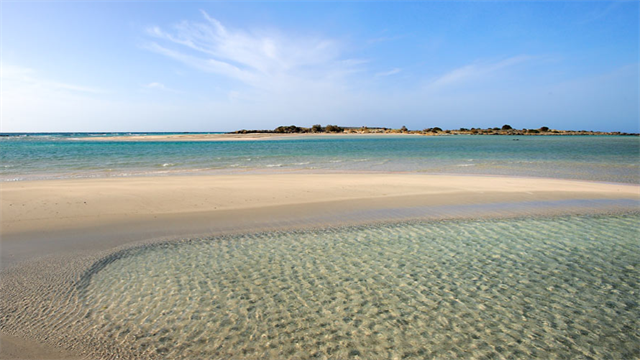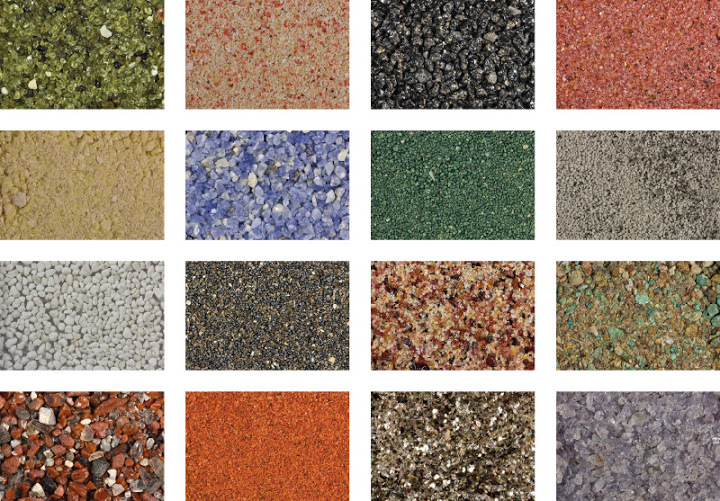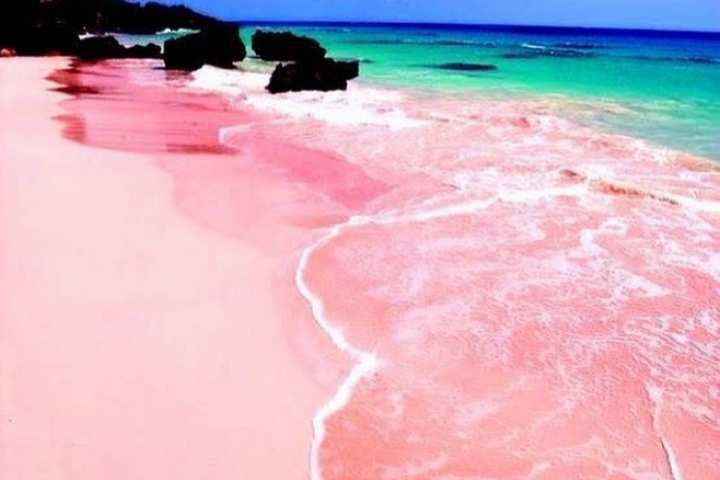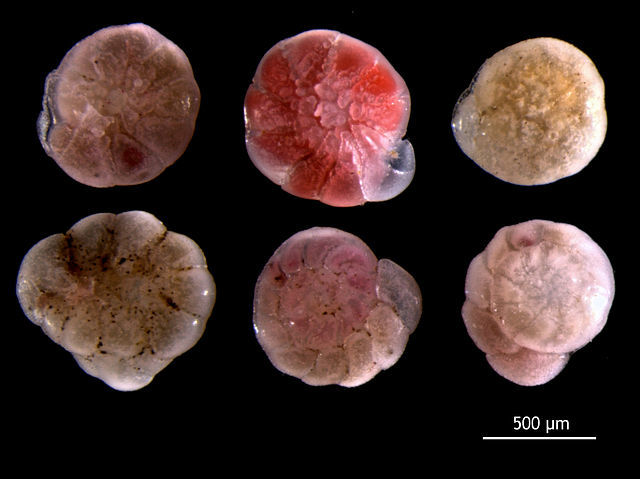

Elafonisi Beach Pink Sand
Elafonisi is a magical place that consists of a main beach and an island full of little white and pink sandy beaches.
You can get to the Elafonisi island on foot because the waters are shallow, sometimes without even getting one's toes wet.
You can also just enjoy the Elafonisi Beach which is one of the most beautiful beach of Crete.
The sand
Sand is a naturally occurring granular material composed of finely divided rock and mineral particles.
The composition of sand is highly variable, depending on the local rock sources and conditions.
Most of the beaches in the world have common similarity when it comes to sand color, texture and water quality.
In fact, there are countless of beaches in different part of the world.
You know that sand comes in colors of yellow, white, or gray. Sometimes, if it’s volcanic, also black.

But what about a pink sand beach, such as Elafonissi ?
There are very few to be found on earth, you can even count it in your fingers : Horseshoe Bay Beach (Bermudes), Pink Beach (Komodo, Indonesia), Pink Sands (Harbour Island, Bahamas), Crane Beach (Barbade).

What causes pink sand ?
Pink sand is a result of tiny red organisms that grow on the dead coral reefs and pieces of shells which fall to the ocean floor.
It is also made of natural formulation of calcium carbonate from very small marine invertebrates that mixed to corals and shells and other marine things which has Foraminifera, microscopic amoeba that has a red or bright pink body shell.
All of these are what causes the sand to have a pink hue.

In order to log this EarthCache, you must answer some questions :
1. Describe where the pink sand comes from, how is it formed ? And what animal did he come from ?
2. Look closely at the pink sand and describe what you see : appaerence, grain size, composition, ...
3. Where can you find and see the more pink sand :
- the beach ?
- the shore ?
- the water ?
4. Why do you think there is more pink sand here?
5. Attach a photo to your log, showing the sand as well as your gecoaching nickname and today's date (written on the sand, paper, your hand, or any other medium). You don't have to appear in the photo.
Send me your proposed answers via geocaching.com messaging (Message Center), I will contact you in case of any problem.
Log this EarthCache in "Found it", attaching the photo in the log.
The logs of those who have not sent a response or not attached the photo will be deleted.
--------------------------------------------------------------------------------------------------


Le sable rose de la plage d'Elafonisi
Elafonisi est un endroit magique qui se compose d'une plage principale et d'une île pleine de petites plages de sable blanc et rose.
Vous pouvez vous rendre sur l'île d'Elafonisi à pieds car les eaux sont peu profondes, parfois même sans se mouiller les orteils à certaines saisons.
Vous pouvez aussi juste profiter de la plage d'Elafonisi, l'une des plus belles plages de Crète.
Le sable
Le sable est un matériau granulaire naturel composé de roches et de particules minérales finement divisées.
La composition du sable est très variable, en fonction des sources et des conditions locales.
La plupart des plages du monde ont des similarités en ce qui concerne la couleur du sable, la texture et la qualité de l'eau.
Mais en fait, il existe d'innombrables types de plages dans différentes parties du monde.
Le sable est souvent dans des couleurs de jaune, blanc ou gris. Parfois noir, si c'est volcanique.

Mais qu'en est-il d'une plage de sable rose, comme Elafonisi ?
Il y en a très peu dans le monde, vous pouvez même les compter sur vos doigts : Horseshoe Bay Beach (Bermudes), Pink Beach (Komodo, Indonésie), Pink Sands (Harbour Island, Bahamas), Crane Beach (Barbade).

D'où provient le sable rose ?
Le sable rose est le résultat de minuscules organismes rouges qui poussent sur les récifs coralliens morts et des morceaux de coquillages qui tombent au fond de l'océan.
Il est composé de carbonate de calcium de très petits invertébrés marins qui se sont mélangés aux coraux et aux coquilles et à d'autres débris marin tels que Foraminifera, une amibe microscopique qui a une coquille de corps rouge ou rose vif.
Tout ces éléments font que le sable a une teinte rose.

Pour loguer cette EarthCache, vous devez répondre à quelques questions :
1. Décrivez d'où provient le sable rose, comment se forme-t-il ? Et de quel animal il est issu ?
2. Observez de près le sable rose et décrivez ce que vous voyez : apparence, granulométrie, taille des grains, composition, ...
3. Où pouvez-vous trouver le plus de sable rose:
- la plage ?
- la rive ?
- l'eau ?
4. Selon vous, pourquoi y a-t-il plus de sable rose à cet endroit ?
5. Joignez une photo à votre log, faisant apparaître le sable ainsi que votre pseudo gécoaching et la date du jour (écrits sur le sable, un papier, votre main, ou tout autre support). Vous n'êtes pas obligés d’apparaître sur la photo.
Envoyez moi vos propositions de réponses via la messagerie geocaching.com (Message Center), je vous contacterai en cas de problème.
Loguez cette EarthCache en "Trouvée", en ajoutant la photo à votre log.
Les logs de ceux qui n'auront pas envoyé de réponse ou pas joint la photo dans leur log, seront supprimés sans préavis.
Sources :
http://www.chaniapost.eu/2015/06/24/the-pink-sand-beaches-of-elafonissi-and-balos-a-brief-explanation/
http://en.wikipedia.org/wiki/Elafonisi